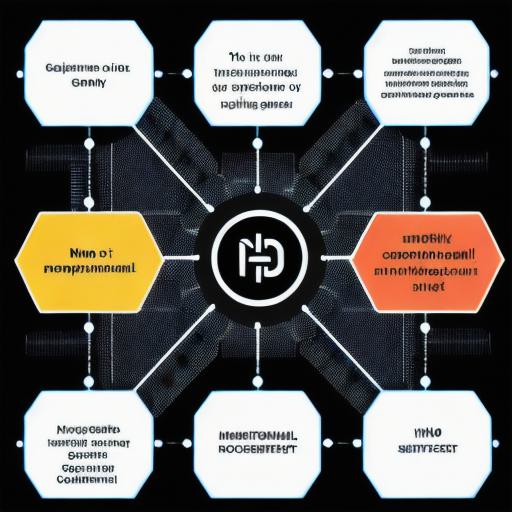Blockchain technology has revolutionized many industries, including gaming. With its ability to provide secure and transparent transactions, blockchain can enhance the gaming experience by allowing players to own their assets, earn rewards, and participate in decentralized games. In this article, we will explore the three pillars of blockchain technology and how they can be applied to game development.
1. Decentralization
Decentralization is the first pillar of blockchain technology. It means that there is no central authority controlling the network. Instead, every participant in the network has an equal say in how the network operates. This creates a highly secure and resilient system, as there is no single point of failure.
In gaming, decentralization can be used to create games that are completely owned by players. Rather than relying on centralized game servers, blockchain-based games can run on a decentralized network of computers, allowing players to have more control over the game and its assets. For example, Cryptokitties is a blockchain-based game that allows players to own and breed unique cats. The game is completely decentralized, with no central authority controlling it. Instead, the community governs the game through smart contracts.
2. Security
Security is the second pillar of blockchain technology. With its use of cryptography, blockchain provides a highly secure platform for transactions. Every transaction on a blockchain network is verified by multiple participants in the network, making it extremely difficult to tamper with or manipulate data.
In gaming, security can be used to prevent cheating and fraud. For example, blockchain-based games can use smart contracts to verify that players have earned rewards fairly and that they own the assets they claim to own. This creates a trustless system where players can have confidence in the fairness of the game.
3. Transparency
Transparency is the third pillar of blockchain technology. With its public ledger, every transaction on a blockchain network is visible to everyone on the network. This provides complete transparency and accountability, making it easy to track transactions and verify their authenticity.
In gaming, transparency can be used to create games that are completely fair and transparent. For example, a blockchain-based game could use a public ledger to track player assets and rewards, allowing players to see exactly where their money is going. This creates a system of accountability, ensuring that players are treated fairly and that the game is not manipulated by anyone.
Case Study: Decentraland

Decentraland is a blockchain-based virtual reality game that allows players to create and own their own avatars, land, and assets. The game uses decentralization, security, and transparency to provide an immersive and secure gaming experience.
Players in Decentraland can buy and sell land using cryptocurrency, and they can also earn rewards by participating in games and events within the game. All transactions on the Decentraland network are recorded on a public ledger, ensuring transparency and accountability.
The Future of Blockchain in Gaming
Blockchain technology has already had a significant impact on gaming, but it’s just getting started. As more players adopt blockchain-based games, we can expect to see even more innovative uses of the technology.
For example, we could see the creation of decentralized gaming platforms that allow players to participate in games across multiple networks, without the need for centralized game servers. This would create a highly scalable and flexible system, allowing players to have more control over the games they play.
FAQs
- What is blockchain technology?
Blockchain technology is a decentralized platform for securely recording and verifying transactions. It uses cryptography to ensure that every transaction on the network is tamper-proof and transparent. - How does blockchain technology work?
Blockchain technology works by using a decentralized network of computers to record and verify transactions. Every participant in the network has an equal say in how the network operates, making it highly secure and resilient. - What are the three pillars of blockchain technology?
The three pillars of blockchain technology
